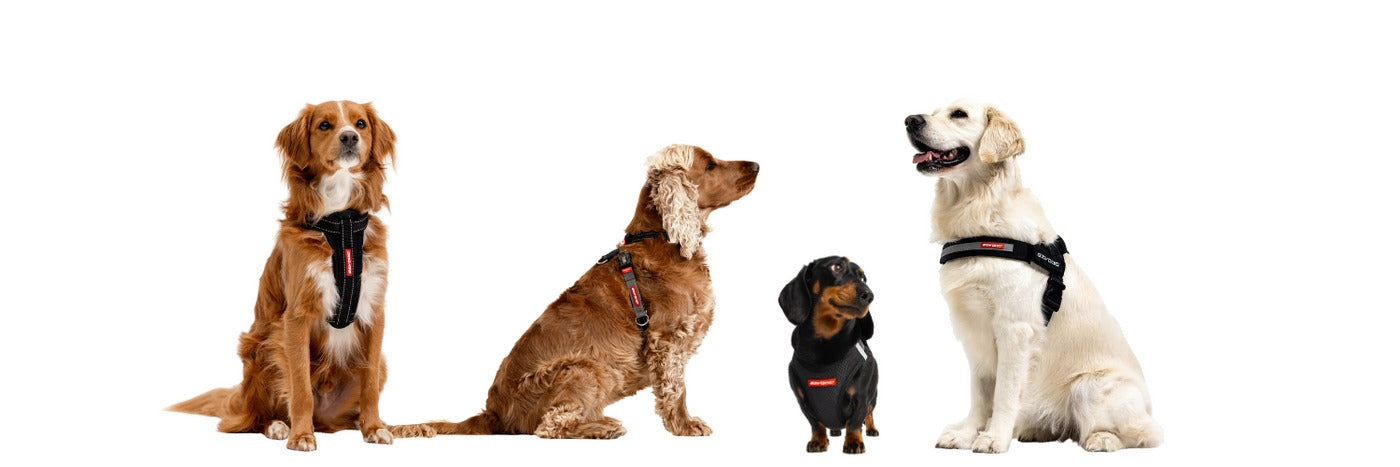How Tight Should a Dog Harness Be? – Your Proper Fit Guide
Why Harness Fit Matters
Getting the right fit on your dog’s harness isn’t just about comfort—it’s about safety. A loose harness can lead to escape, while a tight one can cause pain, chafing, or restricted breathing.
Whether you’ve got a pup that pulls or a senior dog with sensitive skin, a well-fitted harness makes walks safer and more enjoyable for both of you.
The Two-Finger Rule Explained
The easiest way to test harness tightness is the “two-finger rule.” Slide two fingers between the harness and your dog’s body at multiple points—behind the front legs, under the belly strap, and across the chest.
- If you can’t fit two fingers, it’s too tight.
- If there’s too much space, it’s too loose and may slip.
Signs Your Dog’s Harness Is Too Tight
- Redness or rubbing under the armpits
- Heavy panting, coughing, or signs of restricted breathing
- Fur loss or indents after removing the harness
- Dog resists putting it on or walking
Signs Your Dog’s Harness Is Too Loose
- Dog can back out or wriggle free
- The D-ring is off-center or hanging low
- The harness rotates around the chest or bunches at the neck
How to Adjust a Dog Harness for the Best Fit
- Start with the girth strap – this is your anchor.
- Adjust the chest strap so it sits across the front, not against the throat.
- Finish with neck straps if applicable. Ensure equal length on both sides.
- Retest with the two-finger rule after each adjustment.
Harness Fit for Puppies vs. Adult Dogs
Puppies grow fast—so check harness fit weekly. Choose a harness with soft padding and multiple adjustment points, like the Quick Fit Harness.
Breed-Specific Harness Fit Considerations
- Deep-chested breeds like Greyhounds may need longer chest panels.
- Small breeds benefit from lightweight, minimal-pressure designs.
- Broad breeds like Bulldogs or Staffies require wide girth adjustment room.
Common Fitting Mistakes to Avoid
- Assuming all harnesses fit the same—brands differ
- Failing to adjust both sides evenly
- Clipping the leash to a low-sitting ring (it should sit higher on the chest)
When to Replace a Dog Harness
Even a great harness wears down. Replace it if you see:
- Fraying on straps or stitching
- Metal clips rusting or not locking properly
- The fit no longer holds after adjustment
Final Fit Test: Safe, Snug, and Comfortable
Your dog’s harness should sit snugly without limiting movement or causing irritation. Use the two-finger test, check after walks, and always watch your dog’s behavior for signs of discomfort.
Still not sure? Let your dog wear the harness indoors for short sessions before heading out.
Shop EzyDog Harnesses Designed for Secure Fit
Looking for harnesses with smart design and reliable adjustability? Browse our bestsellers:
- Convert Harness – heavy-duty and customizable fit
- Chest Plate Harness – ergonomic chest pad for control and comfort
- X-Link Harness – built for active dogs


